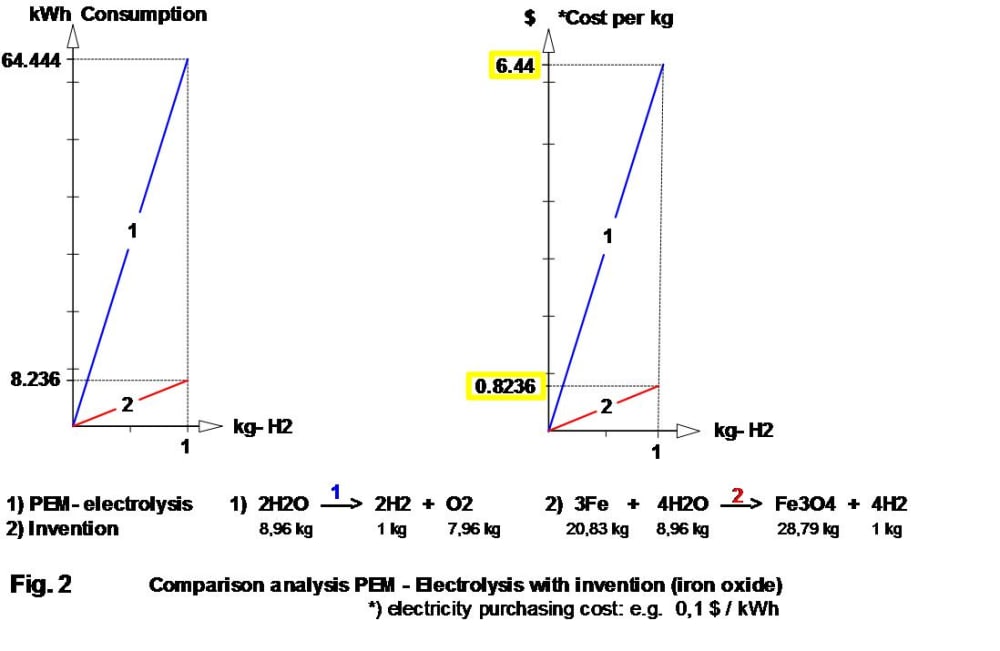The hydrogen conversion is the classic chicken-egg problem:
Since the infrastructure of the filling stations is not sufficient, few H2-powered vehicles are manufactured and because too few vehicles are bought, there is no incentive to set up filling stations!
As is well known, there are two main hydrogen production processes:
- Steam reformer process
- Electrolysis process
The steam reforming process is nine times more widespread in industry than the electrolysis process and pollutes the environment with 9.24 kg of CO2 per 1 kg of hydrogen H2 produced.
Electrolysis processes consume too much electricity, i.e. ¾ of the electrical energy used is used for H2 production, storage, decanting, transport and for provision, e.g. at the filling station. Only hydrogen produced with ¼ electrical energy is available at the pump for operating an electrically powered vehicle, e.g. with a fuel cell!
In April 2021 I registered my invention for hydrogen generation at the European Patent Office EPA, in which the power consumption for the same amount of hydrogen is approx. 7.8 times less than the PEM electrolysis system to be compared, e.g. at the IBaarau / Switzerland hydroelectric power plant.
The production costs (electricity consumption only) of hydrogen at this plant are € 6.44 kg-H2 compared to my concept of € 0.82366 per kg-H2! (see attachments: comparative analysis and electricity cost comparison...)
Only based on a future-oriented hydrogen production technology, which can provide hydrogen safely, reliably and above all inexpensively at as many existing filling stations as possible, will the spread of hydrogen conversion be successful!
The existing electrolysis processes are not sufficiently suitable for a cost-effective green H2 supply of conventional filling stations, and they will not be so in the future either, because they
- Consume too much electrical energy.
- The H2 supply to gas stations and other consumers is only possible with expensive transport vehicles with pressure cylinders, high-pressure accumulators and very expensive and structurally problematic "pipe lines".
- The required economically decisive specific marginal investment of 500 €/kW has not been reached.
- The precious metals used are very expensive and technically and economically problematic. In addition, the global supply of the rare precious metal iridium is simply not sufficient to achieve the EU Commission's hydrogen targets with conventional catalysts.
My concept largely eliminates all the disadvantages mentioned, because it consists of process energy with the highest efficiency, iron or iron oxide grain mass and water vapor.
With the iron oxide process, the cheapest transport and time-delayed H2 production enable the decoupling of the supply of renewable resources and the energy demand, e.g. at filling stations without installing additional high-pressure or liquid storage systems, because the storage density of the iron oxide mass exceeds the volumetric storage density of the commercially available 800 bar H2 high-pressure storage!
As an example, there is no need for an expensive special transporter with a high-pressure accumulator to supply gas stations, because the mass of iron grains can be transported in a plastic container, for example, by an ordinary transport.
Like this entry?
-
About the Entrant
- Name:Orhan Uestuen
- Type of entry:individual
- Software used for this entry:-
- Patent status:pending





